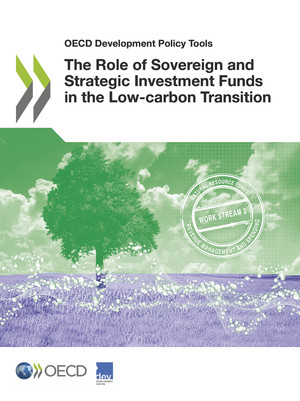Executive summary
Sovereign funds,1 many of which are funded by natural-resource revenues, hold about USD 8.2 trillion of assets under management. Sovereign funds’ action or inaction on climate finance is therefore of crucial importance to the world’s ability to reach the goals of the Paris Agreement and limit global warming to below 2 degrees Celsius. At the same time, climate change could significantly increase the risk to sovereign funds’ portfolios. A review of the literature indicates that climate risk could be under-priced by financial markets, while several studies indicate that low-carbon investment portfolios perform well. Climate change thus brings investment opportunities as well as risk. Addressing climate risk and taking account of climate-related opportunities, is part of sovereign funds’ fiduciary responsibilities to citizens and to their governments.
Sovereign funds are commercial investors, with a fiduciary duty to maximise risk-adjusted returns according to their mandate and save for future generations. Sovereign funds’ climate-related objectives remain largely aspirational, in spite of important recent initiatives. Many sovereign funds are largely passive with regard to climate risk and climate impact. With respect to climate risk, Norway’s Government Pension Fund Global, and the New Zealand Superannuation Fund are among the few sovereign funds that are known to assess such risk systematically in their portfolio companies. Regarding climate impact, on average less than 1% of sovereign funds’ investments go to low-carbon solutions. Furthermore, few sovereign funds disclose information about their climate policies and strategies, and few have adopted climate-focused active ownership policies to reduce the carbon footprints of their portfolios.
Sovereign funds receive their mandates from their governments. They are unlikely to take climate-related action on their own, and unless governments provide them with the resources necessary to meet associated costs. These costs may include the upgrading of mandates, governance structures, investment strategy, partnerships and risk-management frameworks, as well as recurrent costs associated with operating as active climate-aligned owners.
Sovereign funds can undertake climate-related engagement with their portfolio companies either directly or through their asset managers. Sovereign funds that seek to climate-align their operations, and that outsource most or all of their asset management to external asset management companies, should seek to select, monitor and oversee asset managers not only based on financial results but also based on climate impact.
To achieve higher allocations to low-carbon solutions, many sovereign funds would need to undertake major investments in capacity building – at the levels of board, management and staff, and across several areas. This includes i) capacity to engage with portfolio companies on climate-related issues; ii) capacity to select and monitor asset managers based on their climate-related performance, as well as – for the stronger sovereign funds – iii) capacity to invest directly in low-carbon infrastructure.
Well functioning strategic investment funds (SIFs) already have many of the characteristics required to play an important role in the low-carbon transition. SIFs differ from sovereign funds by having “double bottom line” objectives of financial returns combined with the achievement of policy goals. SIFs are domestically focused, and they seek to mobilise private capital for investment in priority sectors and regions. SIFs can contribute to the low-carbon transition by providing equity and other forms of investment capital to sectors and stages of the investment process where the private sector does not invest by itself. However, SIFs are very small compared to sovereign funds, and would need far larger amounts of capital to contribute meaningfully to the low-carbon transition.
Sovereign funds and SIFs are complementary in several ways, and the synergies between them could be further exploited. Sovereign funds could benefit from collaborating more closely with SIFs that already have many of the skills required for playing an important role in climate finance, as well as with pension funds that have built the capacity for direct infrastructure investment. For SIFs, collaboration with sovereign funds would provide an opportunity to scale their investments in low-carbon infrastructure and other climate-related assets. This could be done by channelling part of sovereign funds’ capital through SIFs, or by setting up joint investment platforms with SIFs to pool resources and expertise to co-invest in green infrastructure.
Note
← 1. This document uses the term of sovereign fund. The term of sovereign wealth fund is also commonly used. The two terms are here treated as identical.


